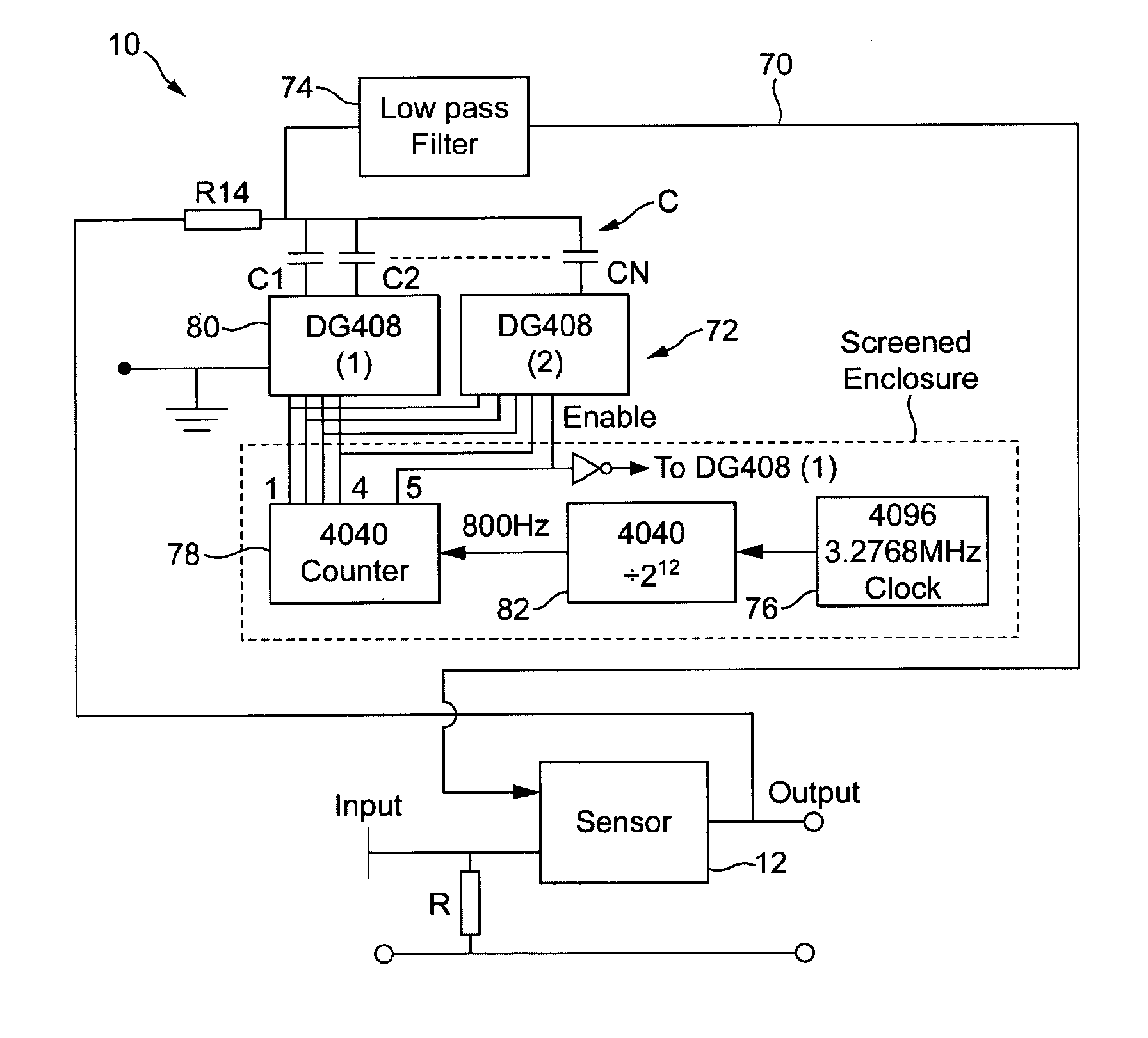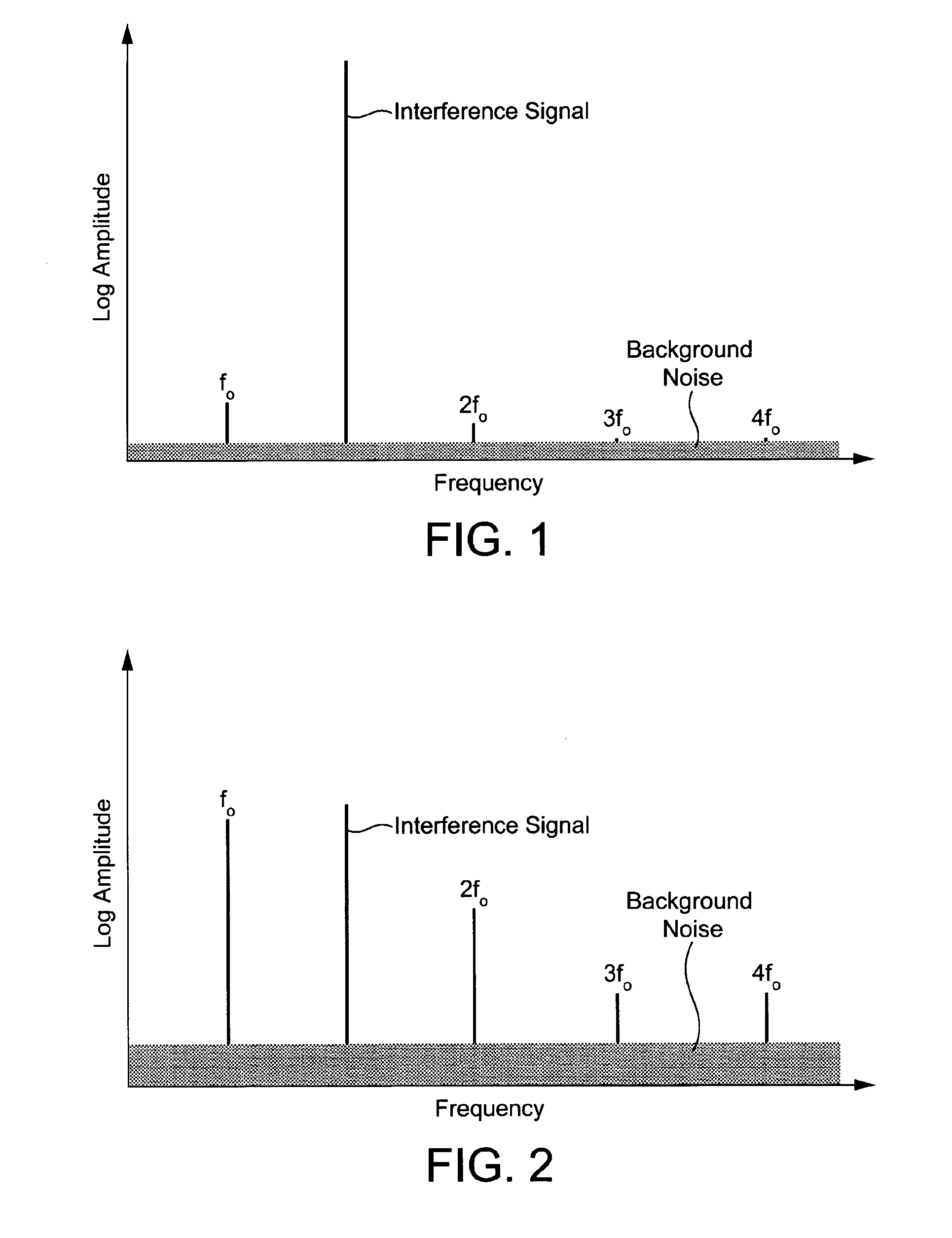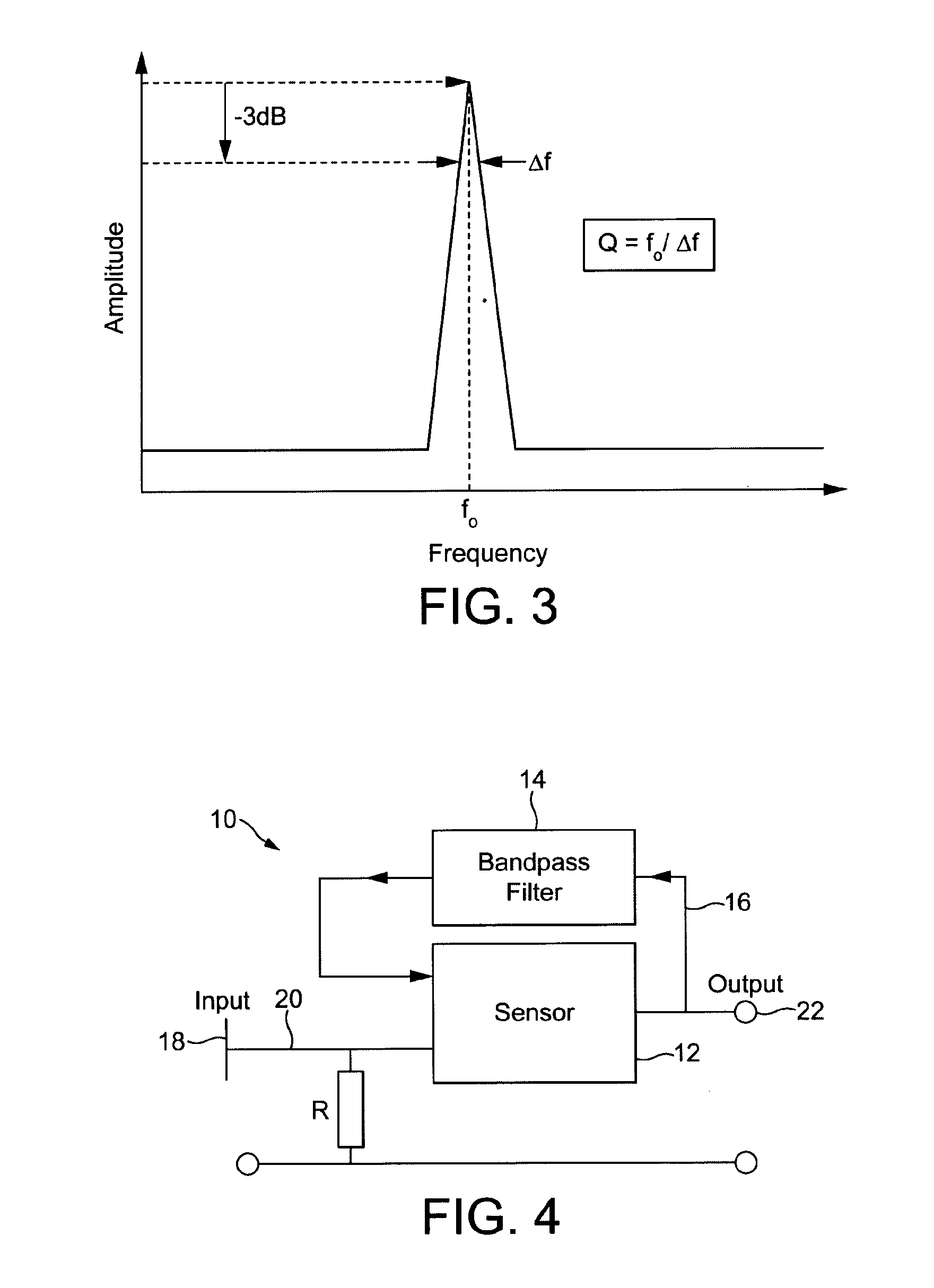Sensor system and method
- Summary
- Abstract
- Description
- Claims
- Application Information
AI Technical Summary
Benefits of technology
Problems solved by technology
Method used
Image
Examples
Embodiment Construction
[0037]The invention will now be described with reference to the drawings. Reference is made firstly to FIGS. 1 and 2 for an explanation of the principles of the invention. These Figures are comparative signal diagrams showing frequency against a logarithmic value for amplitude for the various signals encountered by a sensor in practice, including wanted or detection signals and unwanted or interference signals.
[0038]FIG. 1 shows a typical situation where a large interference signal is present amongst the signals received by a conventional sensor. In order to prevent saturation or clipping of the sensor, which would result in dead sensing regions and loss of the wanted signals (fo, 2fo, 3fo and 4fo), the gain of the sensor has hitherto been restricted to a value which keeps the interference signal within the dynamic range of the system, and this introduces the problems referred to above.
[0039]By comparison, in the example of FIG. 2, the frequency response of the sensor has been tailo...
PUM
 Login to View More
Login to View More Abstract
Description
Claims
Application Information
 Login to View More
Login to View More - R&D
- Intellectual Property
- Life Sciences
- Materials
- Tech Scout
- Unparalleled Data Quality
- Higher Quality Content
- 60% Fewer Hallucinations
Browse by: Latest US Patents, China's latest patents, Technical Efficacy Thesaurus, Application Domain, Technology Topic, Popular Technical Reports.
© 2025 PatSnap. All rights reserved.Legal|Privacy policy|Modern Slavery Act Transparency Statement|Sitemap|About US| Contact US: help@patsnap.com



